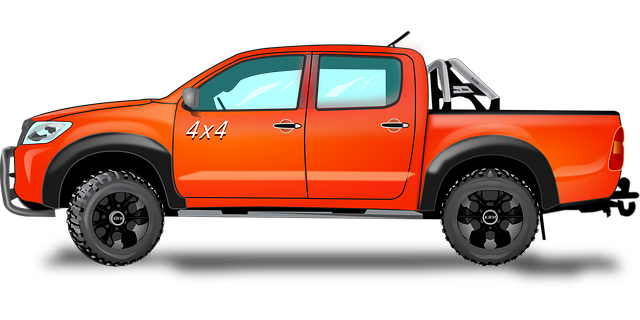Brownville Truck Recovery Equipment relies on reliable brake calipers for heavy-duty operations. Calipers, like floating or fixed designs, pinch pads against rotors to slow/stop wheels. Disc brakes, preferred over drum brakes due to superior performance and heat dissipation, are crucial in demanding environments. Regular inspection, maintenance, cleaning, and lubrication ensure optimal caliper function, enhancing safety during recovery tasks across Brownsville's varied terrain. Proper selection based on vehicle type, use, environment, and material quality is essential for seamless integration and consistent performance.
“Enhance your Brownsville Truck Recovery Equipment’s braking performance with a deep dive into brake calipers. This comprehensive guide unravels the intricacies of these crucial components, detailing their basic function and key parts. We explore the distinct types, including disc and drum calipers, highlighting their applications in various recovery scenarios. Learn effective inspection and maintenance routines to ensure optimal operation. Additionally, discover common issues and essential troubleshooting tips. By considering factors like performance, compatibility, and cost, you’ll make informed choices for your Brownsville truck recovery equipment.”
- Understanding Brake Calipers: The Basic Function and Components
- Types of Brake Calipers: Disc vs. Drum and Their Applications in Brownsville Truck Recovery Equipment
- How to Inspect and Maintain Brake Calipers for Optimal Performance
- Common Issues and Troubleshooting Tips for Efficient Brake Caliper Operation
- Choosing the Right Brake Calipers for Your Brownsville Truck Recovery Equipment: Factors to Consider
Understanding Brake Calipers: The Basic Function and Components

Brake calipers, a fundamental component in a vehicle’s braking system, are responsible for applying pressure to slow or stop wheels. They work by pinching the brake pads against the rotor, creating friction that transforms kinetic energy into heat, thereby reducing speed. Comprised of several key parts, these mechanisms are essential for safe and effective stopping power, especially in demanding environments like Brownsville, where truck recovery equipment is frequently put to the test.
The primary components include the caliper body, which houses the piston(s) that generate clamping force; pads, which create direct contact with the rotor; and a pivoting or fixed mounting system that secures the caliper to the vehicle’s suspension. The design can vary between floating (multiple calipers sharing a single sliding pin) and fixed calipers, each with its own advantages based on vehicle needs and performance requirements, such as those found in Brownsville Truck recovery scenarios.
Types of Brake Calipers: Disc vs. Drum and Their Applications in Brownsville Truck Recovery Equipment

Brake calipers are essential components in any vehicle’s braking system, and their design varies based on different applications. When it comes to Brownsville Truck Recovery Equipment, understanding the distinction between disc and drum calipers is crucial. Disc brakes, as the name suggests, feature a rotor (disc) that rotates with the wheel, cooled by air and often equipped with brake pads that press against it. This type is prevalent in modern vehicles due to its superior cooling efficiency and stronger stopping power. On the other hand, drum brakes consist of a cylindrical drum that surrounds the wheel’s inner part, with brake shoes acting as the braking surface by pressing against the interior of the drum.
Brownville Truck Recovery Equipment often utilizes disc brakes for their superior performance in heavy-duty applications. The open design of disc calipers allows for easier maintenance and better heat dissipation, making them less prone to failure during intense recovery operations. In contrast, drum brakes were more common in older vehicle models but are less preferred now due to their limited cooling capabilities, especially under high braking forces required in recovery scenarios.
How to Inspect and Maintain Brake Calipers for Optimal Performance

Regular inspection and maintenance are essential for ensuring optimal performance from your vehicle’s brake calipers, especially if you rely on your truck for heavy-duty tasks in Brownsville, like truck recovery operations. Here’s how to keep them in top shape: Start by visually inspecting the calipers for any signs of damage, corrosion, or wear. Look for cracks, rust spots, and uneven discoloration, as these could indicate issues with functionality. Check that the caliper pins are clean and well-lubricated; dirty or dry pins can lead to improper operation.
Next, test the calipers’ movement and adjust them if necessary. Ensure they slide smoothly and evenly on the brake pads without any sticking or binding. Regularly cleaning the calipers with a suitable degreaser and re-greasing the pins is recommended. This removes built-up grime that can hinder braking efficiency. Remember, well-maintained brake calipers contribute to improved stopping power and overall safety during recovery operations in Brownsville’s diverse terrain.
Common Issues and Troubleshooting Tips for Efficient Brake Caliper Operation

Brake calipers, a critical component in vehicle braking systems, can often encounter issues that impact their efficiency and performance. Common problems include piston seizure, where the piston becomes stuck due to debris or lack of lubrication, leading to reduced braking power and even complete failure. Another frequent issue is hydraulic leaks, caused by worn-out seals or damaged tubes, resulting in inconsistent brake operation. These problems are particularly relevant for those relying on Brownsville Truck recovery equipment, emphasizing the need for regular maintenance and prompt troubleshooting.
Troubleshooting tips involve inspecting calipers for signs of wear, corrosion, or damage. Addressing leaks by checking seals and hoses is essential. Re-lubrication might be necessary to prevent piston seizure, ensuring smooth movement. For hydraulic issues, examining the master cylinder and fluid levels can help identify problems. Regular servicing, including cleaning and replacement of worn parts, is vital to ensure optimal caliper performance, especially for heavy-duty applications like truck recovery equipment in Brownsville.
Choosing the Right Brake Calipers for Your Brownsville Truck Recovery Equipment: Factors to Consider

When equipping your Brownsville truck recovery equipment with brake calipers, several factors come into play to ensure optimal performance and safety. The primary consideration is the type of vehicle and its intended use. Different trucks may require calipers suited for heavy-duty applications, offering superior clamping force and heat dissipation capabilities. Moreover, the operating environment plays a crucial role; rugged terrain or frequent towing demands calipers designed for endurance and reliability.
Material quality and construction are essential aspects to look into. High-quality steel or aluminum alloys provide excellent corrosion resistance, ensuring longevity in diverse weather conditions. Advanced engineering designs can enhance braking efficiency, reducing wear and maintaining consistent performance over time. Always match the caliper’s specifications with your truck’s requirements for seamless integration and safe operation in various recovery scenarios across Brownsville’s diverse landscapes.
Selecting the appropriate brake calipers for your Brownsville truck recovery equipment is a key aspect of ensuring safe and efficient operations. By understanding the different types, their applications, and the maintenance required, you can make informed choices. Remember to consider factors like vehicle type, braking demands, and environmental conditions when choosing calipers. Regular inspection and timely maintenance will also contribute to optimal performance, extending the lifespan of your brake system and enhancing overall safety during recovery operations in Brownsville.



